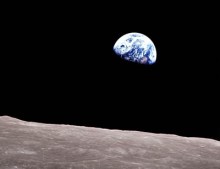One Third of Sun-Like Stars Should Have an Earth-Like Planet in the Habitable Zone

By examining the Kepler data and focusing only on stars that are similar to our sun, Wesley Traub of the California Institute of Technology has found how often different types of planets occur, finding that about one-third of stars similar to our sun are likely to have at least one terrestrial planet located in its sun’s habitable zone. Traub also found that mid-size planets are just as likely to be found around bright stars as they are likely to be found around faint ones, though fewer small planets show up around faint stars, but this is most likely because there is less light for Kepler to see them. This doesn’t come as too surprising, considering the universe is supposed to be infinite, and coupled with probability’s sake, there are bound to be a bunch of mid-size planets in stars’ habitable zones.
(via Technology Review)
Have a tip we should know? tips@themarysue.com